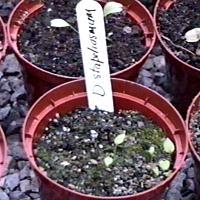
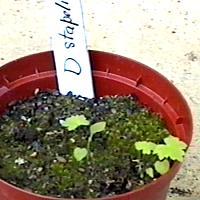
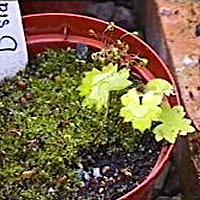
| Return to Asiatic Species List | Return to Species cover page | Return to Home Page |
D. stapeliosmum: Plant Development from Seed to Flowering
D.stapeliosmum was first described in 1894 from plant collections in Assam and also occurs in Burma. It was recently introduced to cultivation in the UK by Crug-Farm Plants from their collection BSWJ2960 made in central Nepal, where it was found growing on shaded, well drained mountain sides at around 2000m. It is described as having "branched stems with lax clusters of deep purple-blue long-spurred flowers rising from a rosette of round, kidney-shaped, deeply cut leaves".
The plants described here were grown from seeds obtained from the Hardy Plant Society. The 8 seeds supplied were sown on 28th January 2001 using peat-based compost. The pot was left outdoors exposed to the weather. Germination was slow compared to other delphinium species seeds in pots alongside. The first seedlings appeared in early May after 12 weeks, with 3 seedlings present by 7/05/01 but there was no further germination. After two weeks growth, the cotyledons were still rather small, as seen in the left-hand picture below, but development proceeded normally with true leaves present by 8/06/01, as seen in the centre picture. There was then little further development of these tiny plants during the rest of the summer with the final stage reached before the leaves died being seen in the right hand picture.
 |
 |
 |
When the seedlings showed no new growth by mid-March 02, the contents of the moss-covered pot were investigated and 3 cylindrical white root tubers about 15 mm long were found. The roots looked to be alive although there were no obvious signs of buds for stem growth. After re-potting, two of the roots had developed leaves by 7/04, left-hand picture below, but it is thought the growth point of the third rotted. The two plants developed steadily, with large basal leaves held on long slender stalks present by mid May, as seen in the centre picture. Several branching stems grew from the base and by the end of June the plants were close to flowering with buds present at the tips of the shoots, as seen in the right hand picture. The stems are slender but very stiff and woody. Leaves and stems are covered with fine hairs.
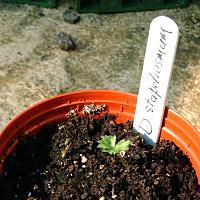 |
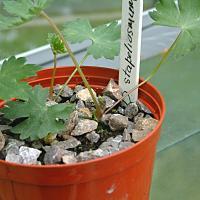 |
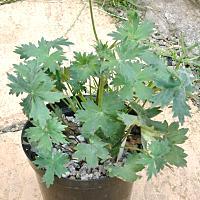 |
The stems grew to 45cm (18in) tall and the first flowers opened in mid July. The large florets, 35mm in diameter, have a straight, slender spur 20mm long and their colour is an intense deep violet or purple, matching very closely the colour of the garden delphinium 'Bruce'. The flowers, like the leaves, are covered with fine hairs.
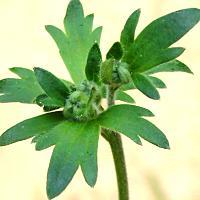 |
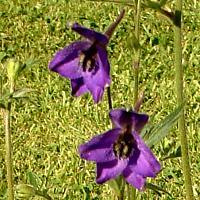 |
Pollination of the flowers resulted in the development of three long slender seed pods for each flower. Unfortunately, the seeds did not ripen properly on the plant because the plant stems rotted just below the soil surface, probably as a result of over-watering.
The general structure of the flowering plant and details of the flowers are shown in the pictures below. Notable features of the flower are the pronounced green beak at the tip of the upper spur sepal, the yellow beards on the petals and the very long white hairs present on the petals.
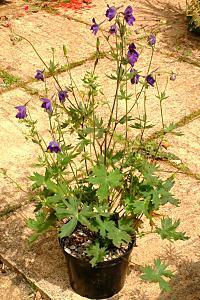 |
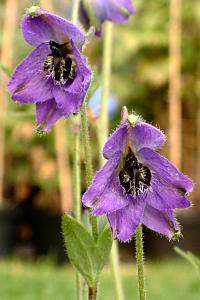 |
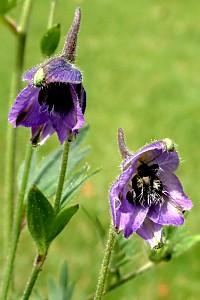 |
| Return to Asiatic Species List | Return to Species cover page | Return to Home Page |